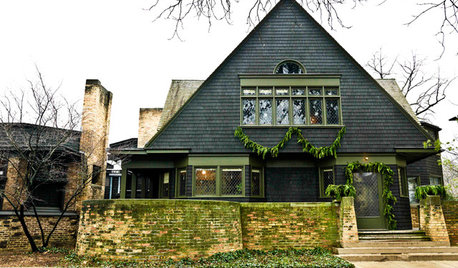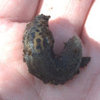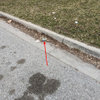I have a rail road ties retaining wall along the drive way. There were 3-4 yellow jacket nests in side the wall. One of them has entry through the ground and perhaps a second entry through the side. They make a nest here every year, some years less numbers others more.
I have been stung in past and since then I try to destroy them.
This year, through the whole summer I did not see any sign of them until about three weeks ago when they suddenly appeared in large numbers. I think it must be the newly hatched ones.
In past I have just taken the gallon sprayer and sprayed triazicide insecticide into the entry holes and it killed most of them or made them abandon the nest. This year, the number of them swarming around the entry was huge. So I was afraid of doing the spray.
I researched the issue here and elsewhere on line. There are several old threads here. The methods suggested have been: gasoline, boric acid, traps of various kind, wasp spray, inverted jar over the ground hole etc.
Here is what I tried and what was successful:
Rescue brand trap: I hung one trap. Day one, nothing at all. Day two, there were about 10 wasps trapped and dead. After that no more. The trap obviously stopped working.
Meat trap: In a large jar, hung a piece of rotting chicken and a piece of fish. Put some sugar water in the bottom of jar. The wasps are supposed to enter through a hole in the lid and get trapped and drown. Over one week, only two trapped.
My own mix trap: Got the idea from the formulation from Rescue trap: mixed sugar, egg, dried granules of yeast, mixed it all in water and used this as attractant. I also added half a tea spoon of insecticide (neem+pyrethrin) in a half gallon of above mix. This insecticide really does not have much smell like some of the petroleum based solutions do. Egg is supposed to be the putrificent. I put some of this mixture in different types of containers. Food steel cans with open top, soda can with tab open, clear plastic 16 oz water bottle about 1/3 full, the cap removed. I set them close to the entries. They all got may be 2-3 wasps in each. But the bottle worked best at 2 of 3 nests. By the end of the day, the bottle was 2/3 full with wasps. When I emptied the bottle, there were at least 200 wasps dead in it. Next day, I could tell that the numbers had reduced drastically and now I was not afraid of approaching the nests for the next step.
Wasp spray can with 20 feet jet spray: At night, I sprayed a whole can of the wasp killer stuff straight into the holes. Next day, there were may be one or two swarming on those entries. One week later no activity at all in these two nests.
For some reason, these traps did not work significantly for the third nest, even though they are same kind of yellow jackets. So, I had to do some thing different for this third one.
Fogger: This third nest had at least 10 or more wasps swarming near the entrance during the day time. I was afraid of approaching it even at night. I did notice that they were absent at 9PM or later. They were already active at 5 AM (sunrise at about 7AM). I did not want to be next to the hole while holding the wasp spray can. So I used the fogger instead. I taped a fogger can (cypermethrine + tetramethrine) to a long pole and triggered it and pointed it to the hole in the wall. In the relative dark it was hard to see, but I was able to tell from the change in the hissing sound when the spray was pointed right into the hole. I emptied the whole can. Next day, i noticed that it had reduced the numbers of wasps active at the entry quite significantly but not eliminate them. With reduced numbers, I was brave enough to insufflate some boric acid into that hole. one week later, now I see only 1-2 wasps still going in and out. Hopefully over the next few days they will die from the slow poison of boric acid.




















calliope
garrydoucet1
Related Professionals
Surprise Landscape Architects & Landscape Designers · Windham Landscape Architects & Landscape Designers · Birmingham Landscape Architects & Landscape Designers · Concord Landscape Contractors · Brooklyn Park Landscape Contractors · Brunswick Landscape Contractors · Canton Landscape Contractors · Gaithersburg Landscape Contractors · Lynchburg Landscape Contractors · Lynn Landscape Contractors · Middletown Landscape Contractors · Quincy Landscape Contractors · Rockville Landscape Contractors · Bensenville Landscape Contractors · Okolona Stone, Pavers & ConcreteKimmsr